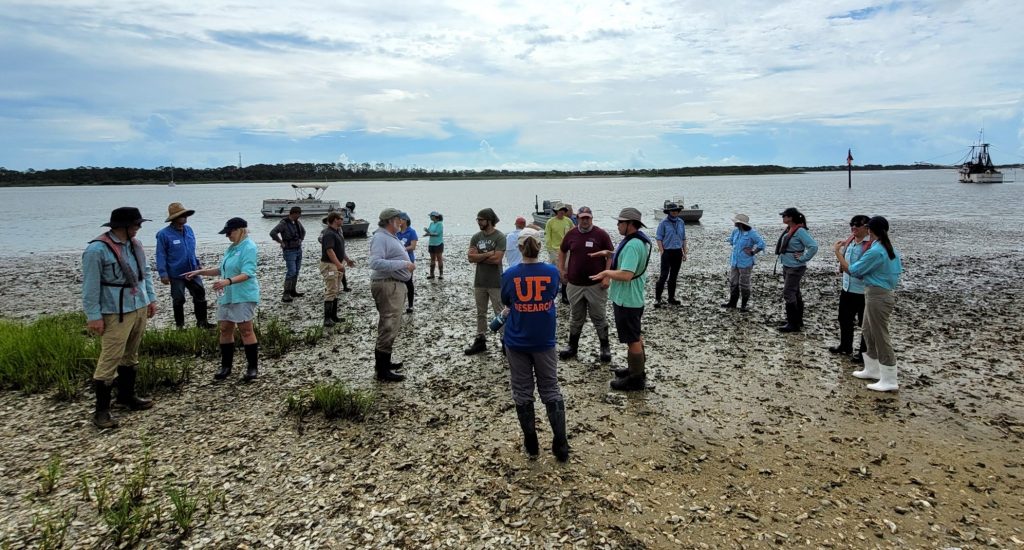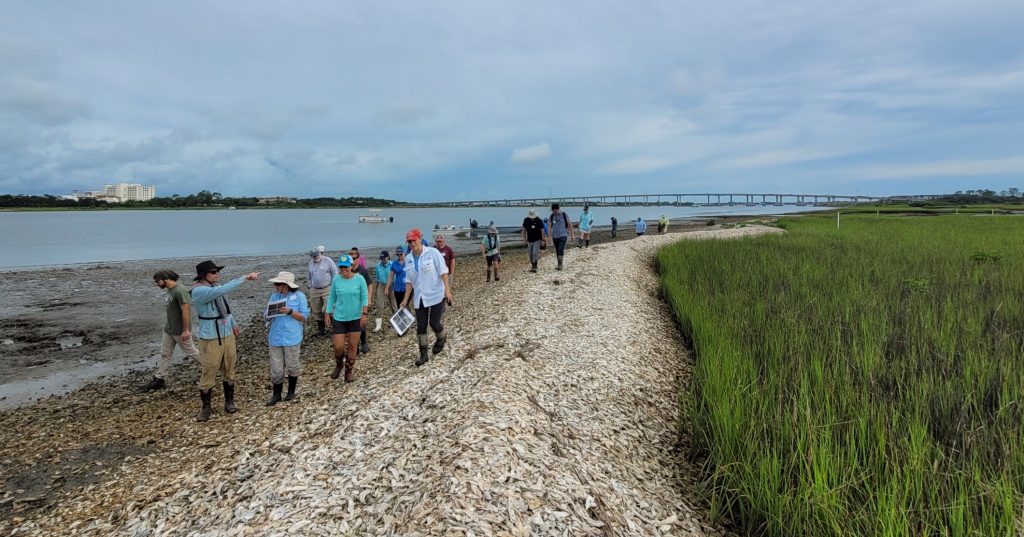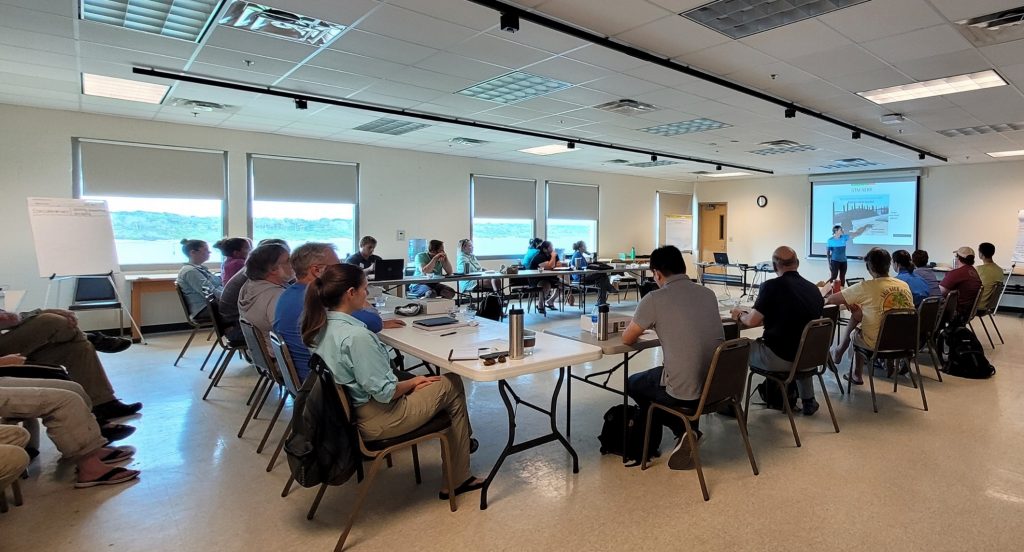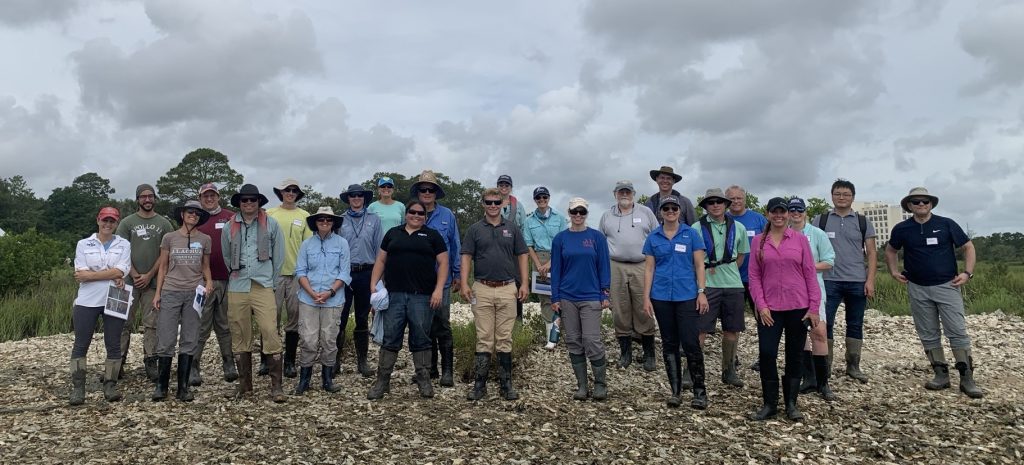
The University of Florida Center for Coastal Solutions is collaborating with the GTM Research Reserve, City of St. Augustine, U.S. Army Corps of Engineers, and Wood Engineering on a National Fish and Wildlife Federation grant. The project “Designing Innovative Saltmarsh Restoration and Protecting Coastal Community Infrastructure” will assess the potential of saltmarsh resilience implementation techniques that reuse dredge sediment, maintain vegetation, and protect coastal community infrastructure. The project will focus on the marshes south of the 312 Bridge in St. Augustine along the east edge of the Matanzas River
A kick-off workshop was recently held to gather stakeholder input on considerations and concerns for this type of work. The day featured a field visit and classroom discussion for 30 stakeholders from federal, state and local agencies and organizations, and the St. Augustine community including representatives from the U.S. Army Corps of Engineers, Florida Inland Navigation District, Florida Fish and Wildlife Conservation Commission, the City of St. Augustine, St. Johns Water Management District, the Matanzas Riverkeeper, engineering consultants, and residents. The research team is focusing their assessment on the marshes adjacent to the Fish Island Preserve, recently acquired by the state and managed by the City of St. Augustine, and the marshes next to Flagler Hospital and the St. Augustine South community. The next steps in this project include developing an initial project design, together with monitoring protocols and active marsh management to improve resilience.


